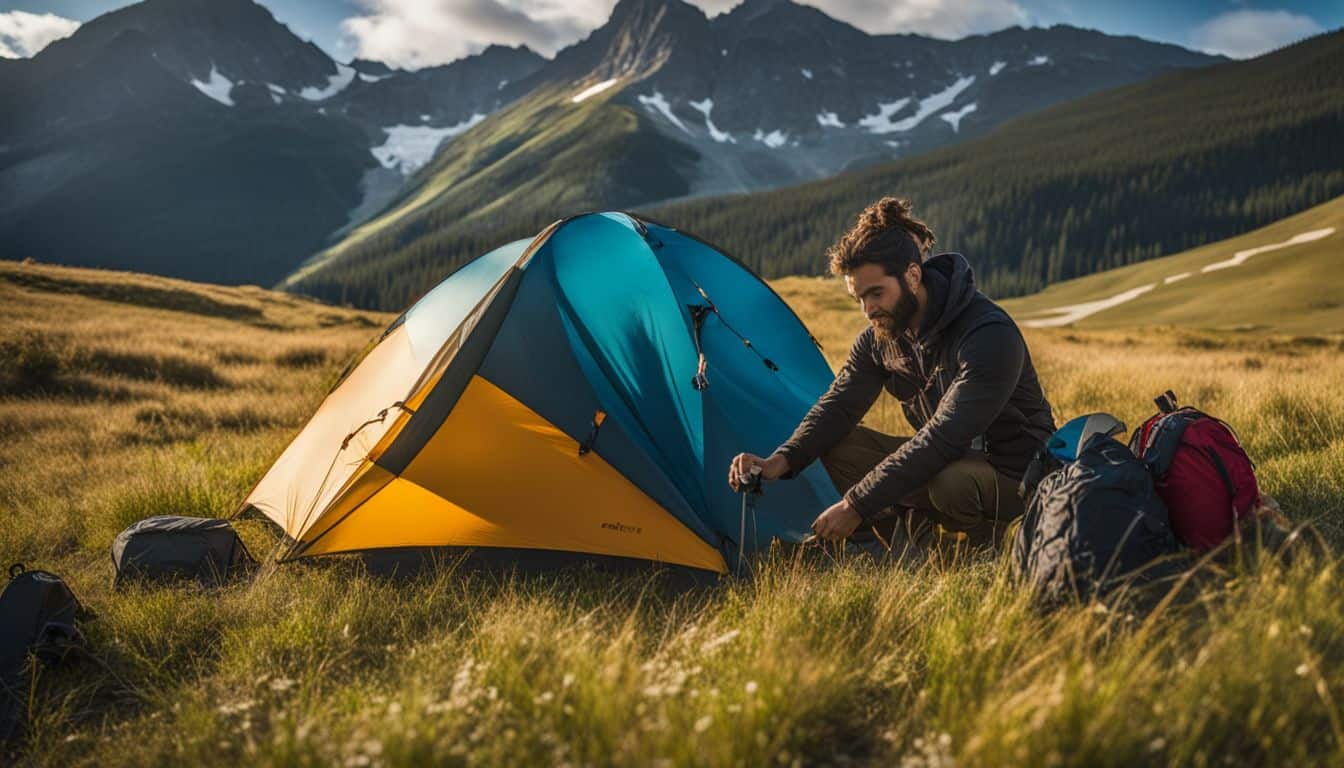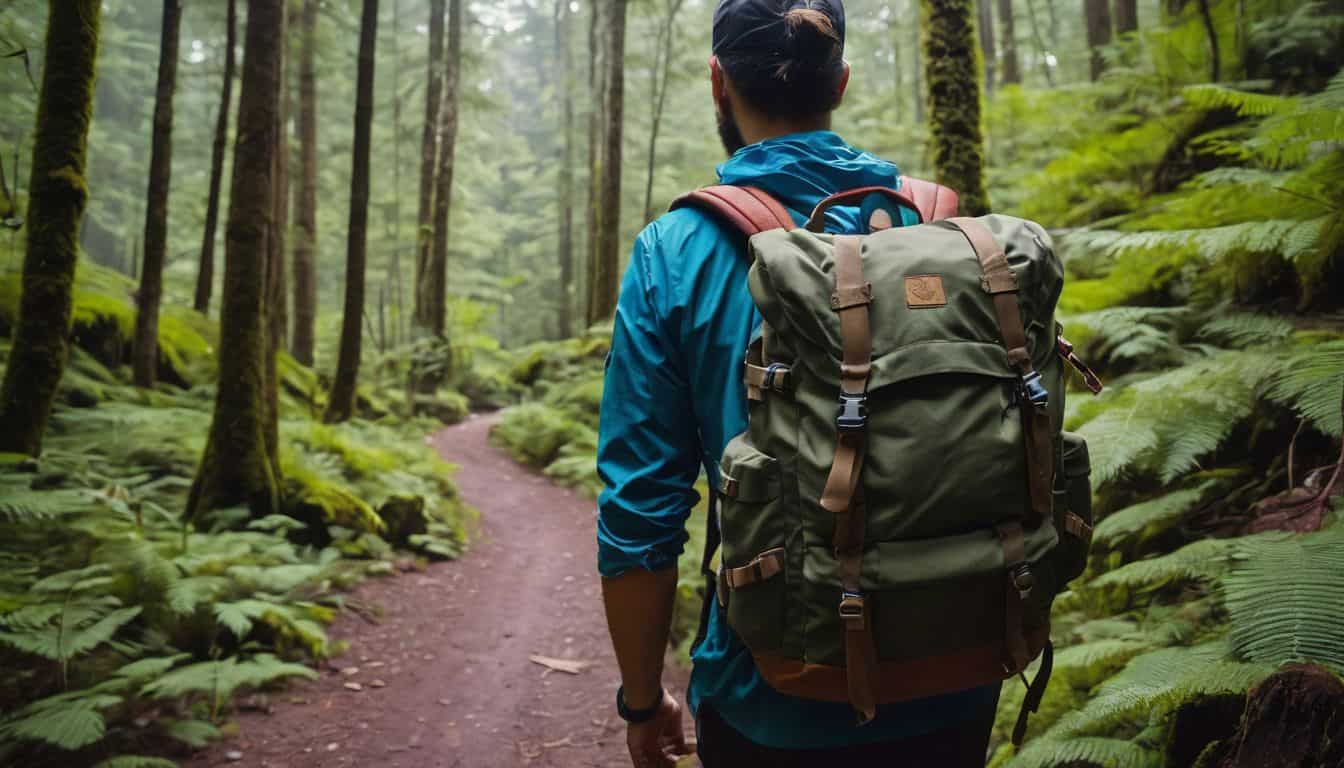For those new to backpacking, navigating wilderness can seem daunting. However, with proper preparation and knowledge, even beginners can safely explore remote trails. This guide will help you get started on your backpacking journey.
Getting Started: Choosing Your First Remote Trail
When selecting your first remote trail, consider these factors:
- Start small and close to home: Begin with a short overnight trip on a familiar trail. This approach allows you to test your gear and skills in a relatively safe environment. If anything goes wrong, you’re not far from help or your exit point.
- Choose well-established trails: Opt for popular, well-marked routes. These trails are typically easier to navigate and have more frequent encounters with other hikers, which can be reassuring for beginners. They’re also more likely to have updated trail information available.
- Keep it manageable: Aim for a round-trip distance of 10 miles or less. This distance provides a good balance between challenge and safety for beginners. It allows you to experience backpacking without overexerting yourself.
- Consider the terrain: Look for trails with minimal elevation gain. Flatter terrain is less physically demanding and allows you to focus on other aspects of backpacking, like navigation and camp setup, without exhausting yourself.
- Research thoroughly: Use guidebooks and online resources to gather information. Knowledge is power in the backcountry. Learn about water sources, potential hazards, and camping regulations. Local ranger stations can often provide the most up-to-date trail conditions.

Essential Gear and Preparation
Proper gear is crucial for a safe and enjoyable experience. In the world of modern backpacking, lightweight and multi-functional gear is key. Always carry the Ten Essentials, including navigation tools, sun protection, and emergency shelter. Invest in a comfortable backpack, quality sleeping system, and reliable water treatment method.
When selecting gear, prioritize items that serve multiple purposes to save weight and space. For example, a smartphone with offline maps can serve as a GPS, camera, and emergency communication device. A good quality sleeping bag and pad are worth the investment for comfort and safety in varying temperatures.
Don’t forget a reliable water filtration system – staying hydrated is crucial in the backcountry. Practice setting up your gear at home before your trip to ensure you’re familiar with how everything works. Remember, the right gear can make the difference between an enjoyable adventure and a miserable experience.
Safety and Skills
Developing essential skills is paramount when venturing into remote areas:
- Learn basic navigation: Practice using a map and compass. This skill is crucial for staying on course and finding your way if you get lost. Familiarize yourself with topographic maps and how to orient them with your surroundings. Consider taking a navigation course or practicing in a local park before your trip.
- First aid knowledge: Take a wilderness first aid course. Knowing how to handle medical emergencies in remote areas can be life-saving. Learn how to treat common injuries and illnesses you might encounter on the trail.
- Weather awareness: Check forecasts and be prepared for changes. Mountain weather can be unpredictable, so understand how to read weather signs and have appropriate gear for various conditions.
- Wildlife safety: Understand how to interact safely with local wildlife. Learn about the animals in the area you’ll be hiking, how to store food properly, and what to do in case of an encounter.
- Leave No Trace principles: Minimize your impact on the environment. This includes proper waste disposal, respecting wildlife, and preserving the natural state of the areas you visit.
- Inform others: Always share your trip plans with someone. This ensures that someone knows where to look for you in case of an emergency.
On the Trail
Once you’re on your adventure, keep these backpacking tips for beginners in mind:
- Pace yourself: Start early and take regular breaks. This allows you to conserve energy and enjoy the journey. Listen to your body and rest when needed.
- Stay on the trail: Stick to marked paths to avoid getting lost. This also helps preserve the natural environment and prevents erosion.
- Be aware of your surroundings: Regularly check your map and landmarks. This helps you stay oriented and can prevent you from straying off course.
- Campsite selection: Choose established campsites when possible. This minimizes your impact on the environment and often provides safer, more comfortable camping spots.
- Water management: Plan your water consumption carefully. Know where your water sources are along the trail and always carry enough to reach the next source.
- Adapt to challenges: Be prepared to modify your plans if needed. Weather, trail conditions, or personal factors might require you to change your route or turn back. Always prioritize safety over reaching a specific destination.
Conclusion
By following these guidelines, beginner backpackers can safely navigate remote trails while building skills and confidence. Remember, the key is to start small, prepare thoroughly, and always prioritize safety over reaching a specific destination. Happy trails!
FAQ
How should I choose my first backpacking trail?
Choose a location close to home where you’ll feel comfortable and can easily return if needed. Look for well-trafficked trails with moderate distances (8-10 miles maximum) and minimal elevation gain.
Select well-maintained paths with reliable water sources and check weather forecasts before departing. Consider starting with an overnight trip to test your gear and abilities.
The ideal first trail balances accessibility with just enough challenge to build your confidence.
What distance is appropriate for a first-time backpacker?
Aim for a modest total distance of 8-10 miles maximum for your first backpacking trip. Many beginners find that even shorter distances (3-5 miles from the trailhead) provide a perfect introduction.
Remember that hiking with a full pack makes miles significantly more challenging than day hiking. Choose a distance you could complete as a day hike if necessary.
Circular routes are ideal as they allow you to cut the trip short if needed.
How important is elevation gain when selecting my first trail?
Elevation gain is extremely important for first-time backpackers. Steep climbs with a heavy backpack can quickly exhaust beginners and turn an enjoyable experience into an ordeal.
Look for relatively flat trails or those with gentle elevation changes. A trail gaining 1,000 feet in one mile is considered quite steep and should be avoided for your first trip.
Build your stamina gradually with easier trails before tackling significant elevation changes.
Should I choose a popular trail or seek solitude for my first backpacking trip?
For your first backpacking adventure, choose a moderately to heavily trafficked trail rather than seeking solitude. Popular trails offer several advantages for beginners:
- Other hikers can provide assistance if needed
- Trail conditions are typically better maintained
- More reliable information is available online
- Emergency help is more accessible
Save remote, backcountry experiences for when you’ve developed more confidence and experience.
What seasonal considerations matter when planning my first backpacking trip?
Summer generally offers the most favorable conditions with longer daylight hours, milder temperatures, and snow-free trails. Research the ideal seasons for your chosen trail, checking typical high/low temperatures and precipitation patterns.
Consider insect seasons—avoiding peak mosquito or black fly times can greatly improve your experience. Regional weather patterns like monsoon seasons or extreme heat should factor into your planning.
Always check current conditions shortly before your departure date.
How should I plan for water on my first backpacking trip?
Research water availability along your route before departing, including the reliability of streams, lakes, and springs. Plan your daily distance around water sources, and never assume natural water will be available without verification.
Always bring appropriate water treatment methods (filter, purification tablets, etc.). Carry enough water between sources to stay properly hydrated, especially in hot weather or dry regions.
A good rule of thumb is to know where your next two water sources will be at all times.
What safety precautions should first-time backpackers take?
Always inform someone reliable about your exact itinerary, including trail name, route, planned campsites, and expected return time. Carry essential safety gear including first aid supplies, emergency shelter, and navigation tools.
Consider bringing a GPS tracker or satellite communication device for remote areas. Check weather forecasts specifically for your trail area and have contingency plans for severe weather scenarios.
Understanding basic wilderness first aid and navigation skills significantly increases your safety margin.
How physically prepared should I be for my first backpacking trip?
Practice hiking with a gradually increasing pack weight to prepare your body for the demands of backpacking. Your pace will likely be slower with a full pack—a general recommendation is to add one hour to your trip for every 1,000 feet of elevation gain.
Building core and leg strength through targeted workouts will reduce injury risk. Take at least one practice hike with your fully loaded pack before your trip.
Even moderate fitness levels are sufficient for beginner trails if you select appropriate distances and elevation profiles.

Leave a Reply